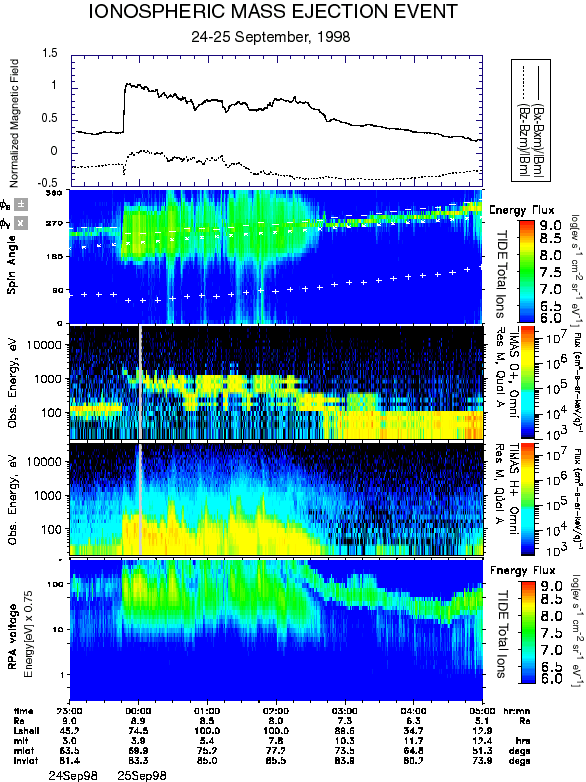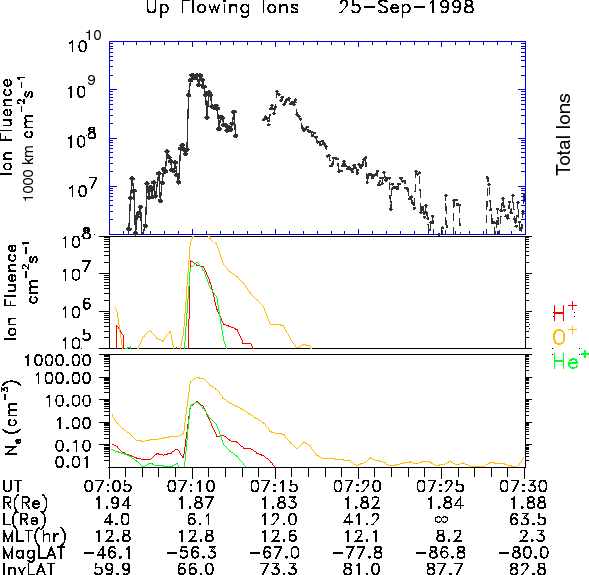


Up: Ionospheric mass ejection
in
Previous: References

Figure 1: Solar wind conditions recorded at the Wind
spacecraft, showing the
arrival of a CME, with associated interplanetary shock and strong dynamic
pressure fluctuations, on 24 Sept. 1998 at 2320 UT, and continuing for several
hours thereafter. The data are averaged over the hour prior to plotted time.

Figure 2: Association of DE-1 upwelling O escape flux with the
hourly
average
deviation of the solar wind dynamic pressure from the ISEE-1 spacecraft, for
the
solar maximum epoch 1981-2. The data sets are as described by
Pollock et al. [1990]. This data was previously presented by
Pollock et al. [1988]. Also shown are data points from the present
study
(open
symbols).
escape flux with the
hourly
average
deviation of the solar wind dynamic pressure from the ISEE-1 spacecraft, for
the
solar maximum epoch 1981-2. The data sets are as described by
Pollock et al. [1990]. This data was previously presented by
Pollock et al. [1988]. Also shown are data points from the present
study
(open
symbols).

Plate 1: Northern polar wind, mantle and cleft region conditions recorded at
the
POLAR spacecraft in response to the CME that arrived at the Earth on 24 Sept.
1998. The MHD compression arrives at POLAR near 23:45 UT. The "+/-" symbols
indicate the spin angles corresponding to field parallel and antiparallel ion
motion. The "x" symbols indicate the spin angle corresponding to s/c motion.
The
magnetic field data are displayed as differences from a model field, normalized
to the model field magnitude.

Plate 2: Southern cleft and polar cap conditions recorded at
the POLAR
spacecraft subsequent to the passage of a CME past the magnetosphere on 24-25
Sept. 1998. Southern cleft crossing occurs near 07:05-07:15 UT. Ion fluxes for
TIDE are transformed to 1000 km altitude for comparison purposes.



Up: Ionospheric mass ejection
in
Previous: References
© 1999 American Geophysical Union



